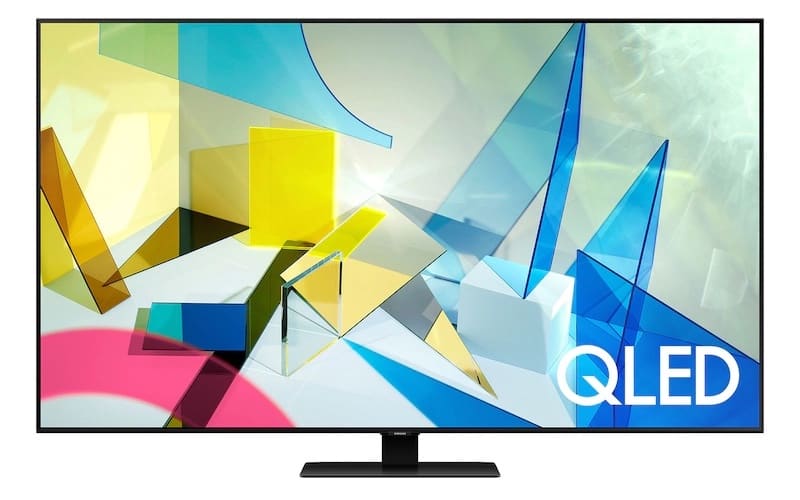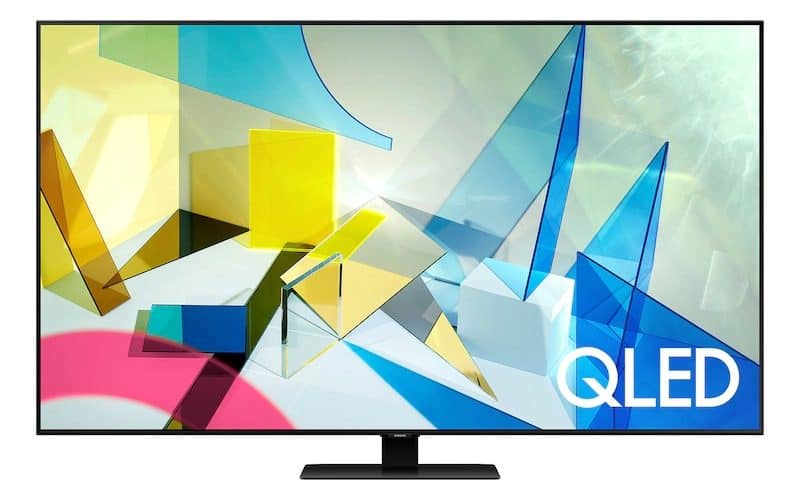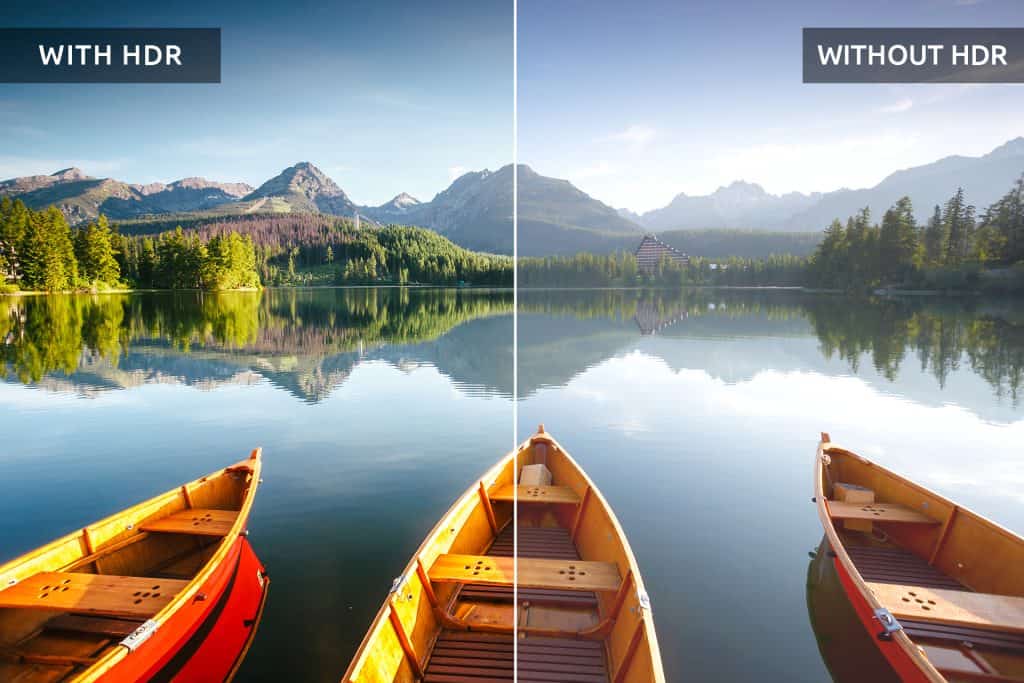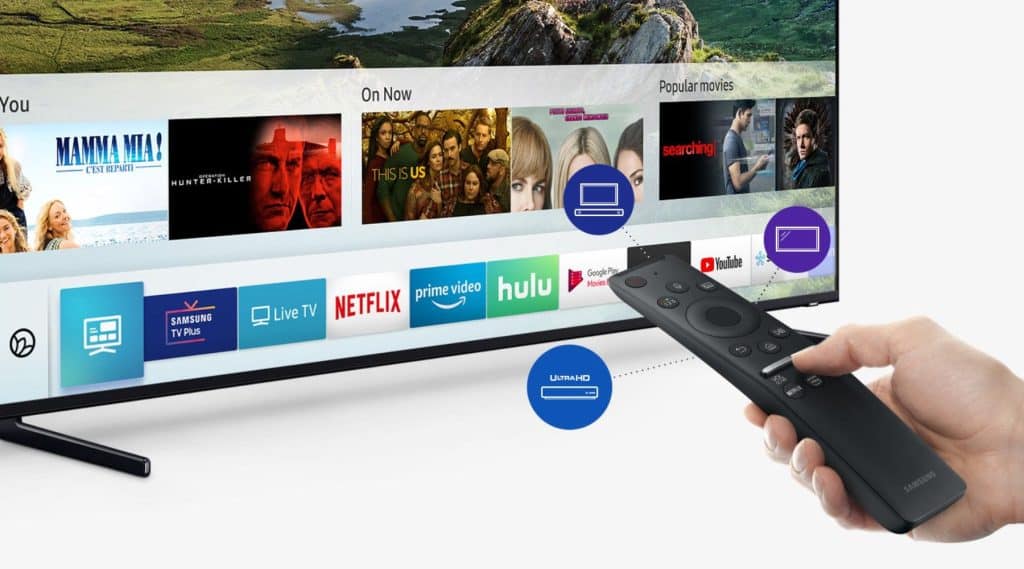If you are a fan of the Samsung brand, you have come to the right page! There is a large selection of great Samsung TVs on the market, so choosing a new TV can be challenging. Luckily, in this article, we are going to compare the Samsung Q8DT vs Q80T. These are two powerful models with many exciting features!
Samsung Q8DT vs Q80T – Quick Comparison
Samsung has a vast range of devices, from small basic TVs to large premium TVs. Whatever specifications you are interested in, Samsung always has something to offer you. Whether you want a nice design, fast performance, or excellent picture quality, you can have it all in one TV.
That is why we have decided to compare Samsung Q8DT and Q80T and help you find a TV suitable for you. We can start with the basic specification in the table below.
| Samsung Q8DT | Samsung Q80T | |
|---|---|---|
| Panel technology | QLED | QLED |
| Screen sizes | 49, 55, 65, 75, 85 inches | 49, 50, 55, 65, 75, 85 inches |
| Image Processor | Quantum Processor 4K | Quantum Processor 4K |
| Resolution | 4K | 4K |
| Local dimming | Yes | Yes |
Backlight | Direct Full Array 12X *Direct Full Array 8X on 49-in model | Direct Full Array 12X *Direct Full Array 8X on 49-in and 50-in model |
| HDR | HDR10, HDR10+, HLG | HDR10, HDR10+, HLG |
Motion rate | 240 (120 on the 49-in model) | 240 (120 on the 49-in and 50-in model) |
| Smart TV platform | Tizen OS | Tizen OS |
| Voice assistants | Google Assistant, Bixby, Amazon Alexa | Google Assistant, Bixby, Amazon Alexa |
| HDMI ports | 4 | 4 |
| USB ports | 2 | 2 |
Sound output | 60W (40W on the 49-in model) | 60W (40W on the 49-in and 50-in model) |
Samsung Q8DT

Pros:
- Powerful sound
- Great motion rate
- Tizen OS
- Motion handling
Cons:
- Dark spots in the corners
- Narrow viewing angles (49-inch model)
Samsung Q80T

Pros:
- Good contrast ratio
- Great refresh rate
- Intuitive Smart TV platform
- Outstanding performance in dark rooms
Cons:
- Narrow viewing angles (49-inch and 50-inch models)
- Less audio channels than the Q8DT model
Samsung Q8DT vs Q80T: Features face to face
Panel Technology
These TVs use panel technology which is called QLED (Quantum Dot LED TV). Unlike OLED TVs which don’t have a backlight, QLED is a type of LCD LED TV. It means it has an LED backlight, and it has a quantum dot film added to the LCD layers.
The light from the backlight travels through the quantum dot layer. It is then transmitted through the LCD sandwich layers onto the screen. For that reason, QLED is transmissive. Samsung or TCL most often uses this type of technology.
Winner: Draw
Image Processor
Both TV models have the Quantum Processor 4K. This processor uses machine learning algorithms to increase picture quality. For instance, if you watch low-quality video content, the processor will upscale it to near 4K quality. With that in mind, you can always have a clear picture on your TV.
One of their exciting features is AI sound. This is Samsung’s sound technology that recognizes TV content. For instance, if you watch the news, the TV will amplify the voice of the presenter. On the other hand, if you watch movies, the focus will be on special effects. You don’t need to play with the equalizer since the processor adjusts the sound dynamically.
Winner: Draw
Motion Technology
By now, you have probably heard about refresh rates. The refresh rates indicate how many times per second a TV can refresh its image. Modern TVs refresh rates usually range from 60 Hz to 240 Hz.
However, Samsung decided to express this feature as “motion rate.” So, their TVs have a motion rate of 120, 240, and so on. These numbers basically express doubled numbers of refresh rates. Therefore, the motion rate 240 is a refresh rate of 120 Hz, the motion rate 120 is 60 Hz, and so on.
The Q80T model has a motion rate of 240 (120 Hz refresh rate), except for the 49-in and 50-in models, which have a motion rate of 120 (60 Hz refresh rate). The Q8DT model also has a motion rate of 240, except for the 49-in model, which also has a motion rate of 120.
Winner: Draw
Picture Quality
What is great about Samsung TVs is that they are among the few manufacturers that support HDR10 and HDR10+. There are three HDR formats today, HDR10, HDR10+, and Dolby Vision. Both of these models support HDR10 and HDR10+, but not Dolby Vision.

HDR is a feature you can find on 4K and Full HD TVs. This feature helps them to enhance picture quality. It balances out the contrast and the colors, but also the dimming and brightness levels. As a result, there is more depth between darker and lighter shades.
Here are the differences between the formats in the table below.
| HDR10 | HDR10+ | Dolby Vision | |
|---|---|---|---|
| Peak Brightness | Up to 1000 Nits | Up to 4000 Nits | Up to 10000 Nits |
| Bit Depth | 10 bit for 1.07 billion colors | 10 bit for 1.07 billion colors | 12 bit for 68.7 billion colors |
| Metadata | Static | Dynamic | Dynamic |
| Netflix | Yes | No | Yes |
| Amazon Video | Yes | Yes | Yes |
| Apple TV 4K | Yes | No | Yes |
| PS4 | Yes | No | No |
| Xbox One | Yes | No | Yes |
Contrast Ratio / Black Level
These models have a good contrast ratio, but the ratio is not so good compared to other TVs with VA display panels. The reason for it is the Ultra Viewing Angle filter that provides wider viewing angles but lowers the contrast ratio. That is why some blacks can seem a little gray sometimes.
You can improve the blacks by enabling the local dimming feature. However, the 49-in and 50-in models can have a better contrast ratio because they don’t have the Ultra Viewing Angle filter.
Winner: Draw
Local Dimming
Both of these TVs come with full-array local dimming. They come with the Direct Full Array 12X, except for the 49-in and 50-in models that come with the Direct Full Array 8X. When this feature is turned on, the overall contrast is enhanced.
There is no blooming around the bright objects, and the TVs display the subtitles very well. The blacks look good in dark scenes and when displayed in dark rooms.
Winner: Draw
Peak Brightness
These models have great SDR brightness and good HDR brightness. If you need brighter HDR content, you can always play around with settings to get a brighter image.
The maximum brightness on these TVs is around 700 Nits. It means that they perform well in bright rooms, as well. But, in some cases, both TV models may have dark spots in the corners when displaying brighter scenes.
Winner: Draw
Color
The Samsung Q80T has a wide color gamut and great color volume. Since the contrast ratio is a little lower when compared to other VA panels, dark colors are not displayed that well.
It has good gradient handling. The banding occurs with the greens, but sometimes with reds, blues, and grays. You can avoid banding if you turn on the Noise Reduction feature but expect to lose fine details.
It also has great black uniformity, even though there might be some gray colors and some clouding when local dimming is turned off. The Samsung Q8DT has a similar color performance.
Winner: Draw
Viewing Angle
Samsung QLED TVs (on 55-inch models and above) have an Ultra Viewing Angle layer with anti-glare, which widens the viewing angles on these TVs. So, they have good viewing angles, and you shouldn’t experience any significant brightness loss or color washout at wider angles.
However, 49-inch and 50-inch models don’t have this feature, so you can expect narrower viewing angles on these models.
Winner: Draw
Reflections / Anti-glare
Both TVs have great reflection handling since they have an anti-reflective coating and a glossy finish. But, you can notice some rainbow effects across the screen when exposed to the bright lights, especially on darker content.
But, overall, they handle reflections very well. In other words, you can place your TV in brighter rooms. Since these TVs have great SDR brightness, they can fight glare very well when they are placed in bright rooms. In addition, they come with an Ultra Viewing Angle with Anti-Glare features that help reduce glare and provide vibrant colors.
Winner: Draw
Sound Quality
The Samsung Q8DT has a 4.2.2CH sound system that delivers powerful sound. It is worth mentioning that this TV has Object Tracking Sound (OTS). Thanks to this feature, the Samsung Q8DT recognizes the type of TV content (music, movies, sport, etc.) and adjusts the sound for a better sound experience.
But, if you want to raise your sound experience to a higher level, there is the eARC feature or Enhanced Audio Return Channel. The main goal of this feature is to deliver high-quality sound to your soundbar or AV receiver through an HDMI cable. It is worth mentioning that you can use this feature on both models, Samsung Q8DT and Q80T.
Although we can’t expect too much from integrated speakers, the Samsung Q80T delivers a pretty decent sound. It has a 2.2.2CH channel system. However, if you are a fan of powerful sound, you might notice the lack of bass. For that reason, it might be a good decision to invest in a soundbar or connect a subwoofer to your TV.
Although both models have 60 W audio output, the Samsung Q8DT has a 4.2.2CH sound system, giving it an advantage in this segment.
Winner: Samsung Q8DT
Smart TV Platform (Operating System)
Tizen OS is an intuitive system that comes with many smart features. As you are used to, there is support for streaming applications. Some of them are pre-installed, such as Amazon Prime Video, Disney+, and Netflix.
However, the system allows you to install a wide range of applications and enjoy music, movies, and podcasts. For instance, you can install Samsung TV Plus and watch additional TV channels.
The smart hub is the central place of the system. From here, you can search for apps, change settings, or create shortcuts. In other words, you have everything in one place, which means the system is very easy to use.

It comes with Bixby, which is a language assistant. Additionally, it supports Google Assistant and Amazon Alexa.
Auto-detection is one of the best features of this system. For example, when you connect a PS4 to a TV, it will automatically detect it and create a shortcut. If you want a simple, easy, and fast TV smart system, Tizen OS might be a good option for you. Both models come with the same system, so you can choose the Samsung Q8DT or Q80T.
Winner: Draw
Connectivity
Inputs
Both of these TV models have the same number of inputs. In other words, whether you choose Samsung Q8DT or Q80T, you will get four HDMI ports and two USB ports. For today’s standards, this is enough to connect your most important external devices.
Winner: Draw
Voice Assistants
These TVs have three built-in voice assistants. So, they come with Bixby, Google Assistant, and Amazon Alexa. You can use Bixby to get recommendations or control the devices connected to the TV.
Alexa can help you search content, change channels, open apps, or turn off the TV. Google Assistant can help you control devices or ask questions. When you have three voice assistants, the options are endless.
The Samsung QLED TVs come with a small, sleek remote. It has a built-in mic, so you can use the voice control via Bixby voice assistant. You will also find the shortcuts to streaming services like Netflix and Amazon Prime Videos.
Winner: Draw
Wireless technologies
Both Q8DT and Q80T models support Wi-Fi (802.11ac) and Wi-Fi Direct. They also support the 4.2 version of Bluetooth.
Winner: Draw
Conclusion
To conclude this Samsung Q8DT vs Q80T comparison, we will emphasize the main advantages of each TV.
Get the Samsung Q8DT if you want:
- Superb sound quality
- Picture without flickering and stuttering
- Simple and fast Smart TV platform
- Vibrant colors and high contrast
Get the Samsung Q80T if you want:
- Good motion handling
- Decent sound quality
- Great balance between contrast and colors
- Intuitive Smart TV interface